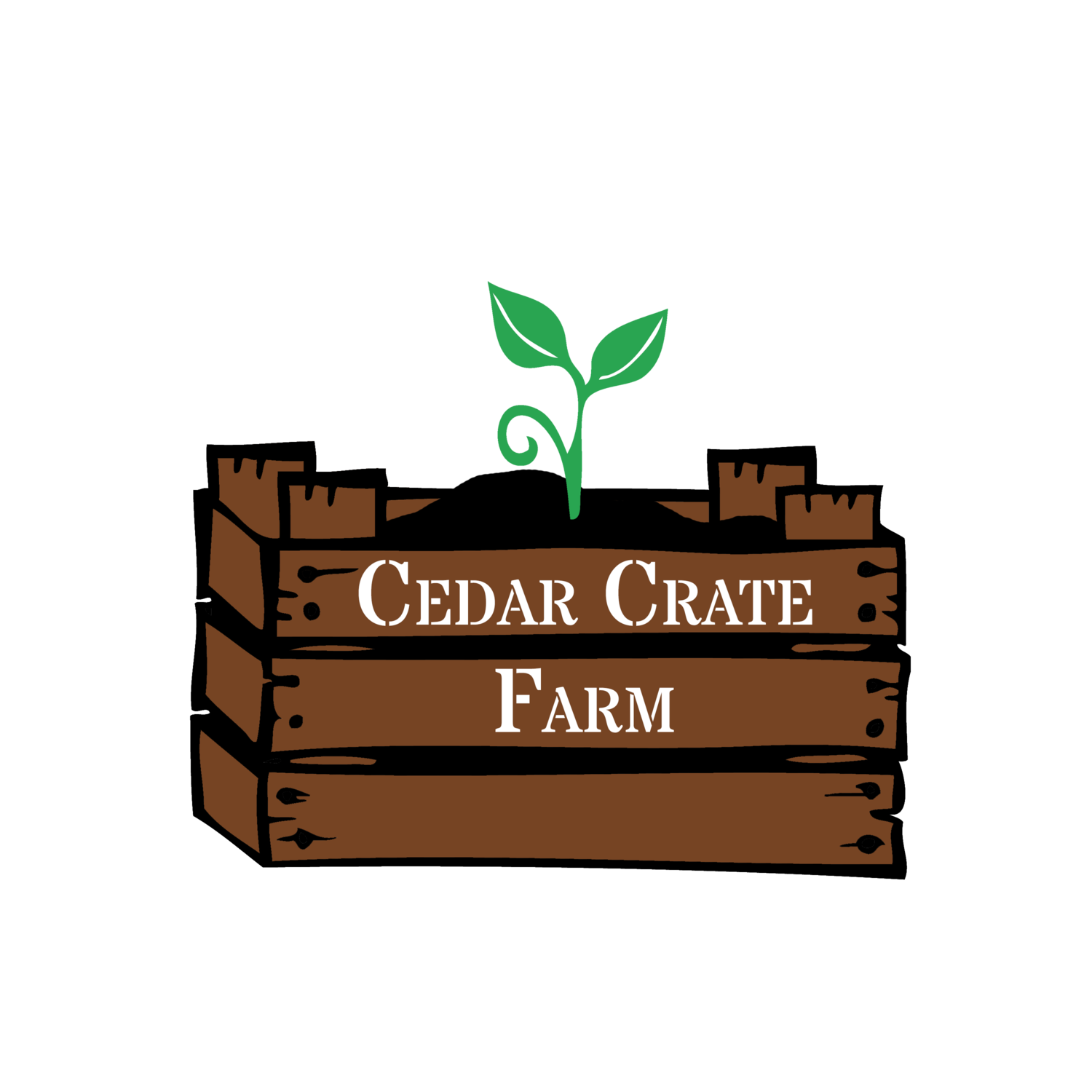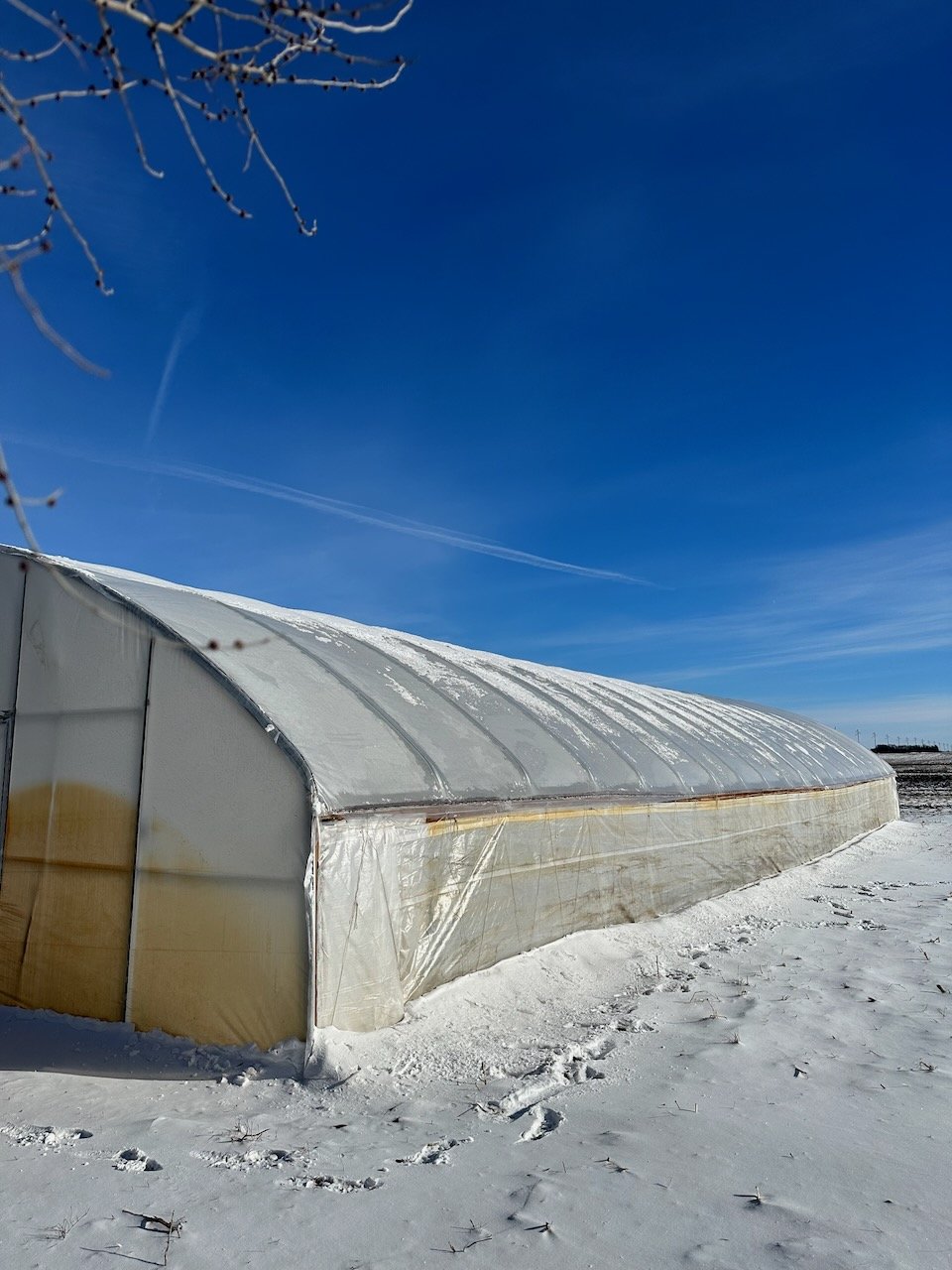Our New Winter Tunnel Project
Those of you who have been following us for awhile know that for the past 4 or 5 years we’ve been dabbling in winter growing here in Minnesota. We’ve made some important observations and gained a lot of experience over the past few years and we have a good feel for which crops could survive our sometimes harsh winters and which do not. Combining that experience with work from other farms and farmers like us we’re planning to construct a new high tunnel designed specifically with winter growing in mind. In this post we’ll go over the features of this new tunnel, the crops we expect to grow, and the areas of uncertainty we have with this project.
Our biggest tunnel on a cold winter day.
There are several features of this winter high tunnel that will separate it from our other tunnels on the farm. Let’s go over them.
Double plastic layer. Our winter high tunnel will have two layers of plastic and be equipped with a blower to blow air in between the layers of plastic. This will give this tunnel a small amount of insulation to help the heat stay in the tunnel on the coldest of nights.
Swedish Skirt. This is an additional insulation layer around the perimeter of the tunnel designed to help keep the frost out of the tunnel. We’ll bury foam insulation board around the entire perimeter. The ground is an incredible heat bank and by slowing or eliminating frost from getting in the tunnel we’ll be able to continue growing further into the winter.
“Minimally Heated.” Over the past few years of winter growing we’ve discovered that many crops will survive temperatures below freezing. Crops like lettuce, scallions and bok choy can survive temperatures as low as single digits. By utilizing a high efficiency propane heater, convective tubing, and row cover we will heat the tunnel to 30-35* to keep these crops alive throughout the winter with minimal heating costs.
We’ve touched on this already but the crops we plan to grow include some of our most popular crops like lettuce, scallions, bok choy, cilantro & kohlrabi. Our goal here is to hit the best intersection of popular, high demand crops and cold tolerance. The ultimate goal then is to offer a all winter CSA that combines storage crops like beets, carrots, potatoes, onions & cabbage with winter crops like spinach, lettuce, bok choy to offer a really well rounded share even in the depths of winter.
Winter crops inside our biggest high tunnel
There are some unknowns here. First, we basically no experience with a heated tunnel which brings up some concerns. First, we’ll closely monitoring condensation inside the tunnel which can be a vector for disease for our winter crops. Second, we’ll be closely monitoring pest issues - last season we noticed aphids in our crops and we think that our mild winter combined with the protection of our tunnel allowed the aphids to survive when they normally wouldn’t. Finally, we’ll be monitoring heating costs - we’ve run the numbers through a thermal unit calculator which indicates it will be relatively cheap to run but the numbers are just an estimate and real world experience is what really matters.


